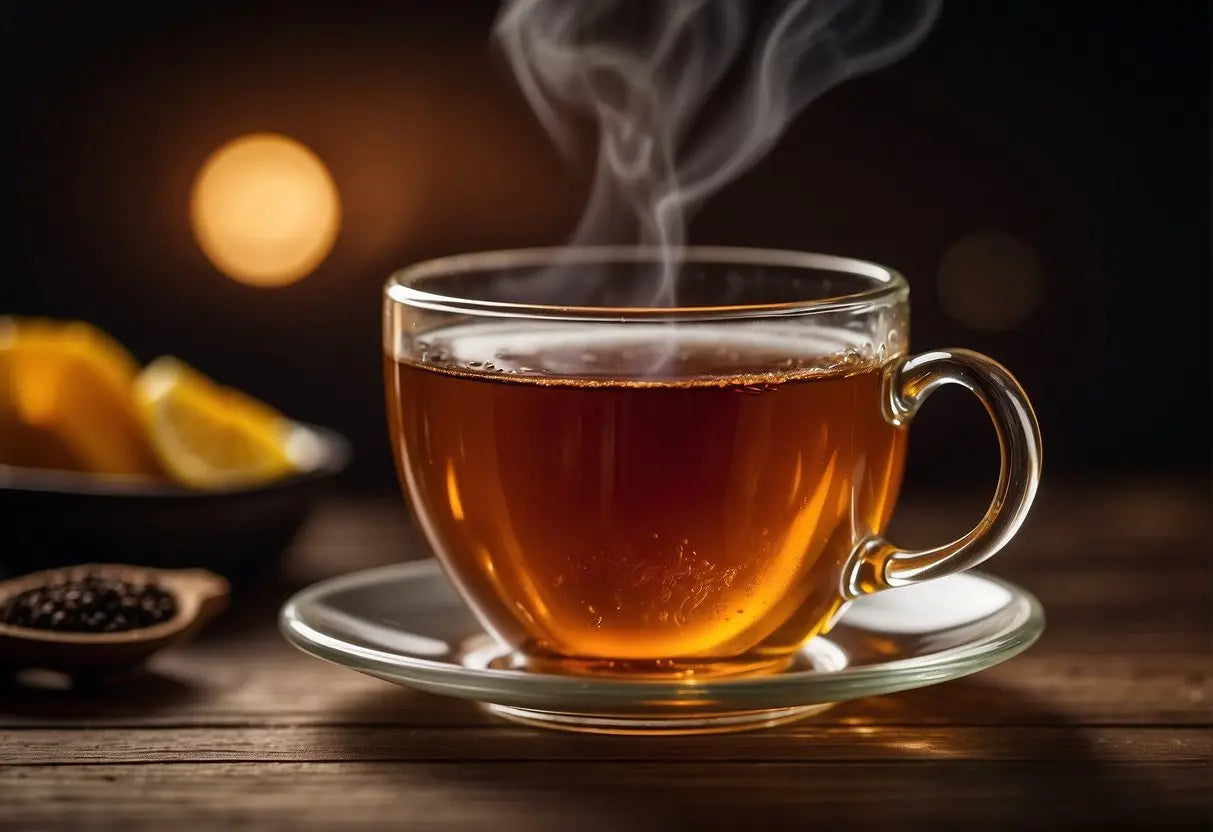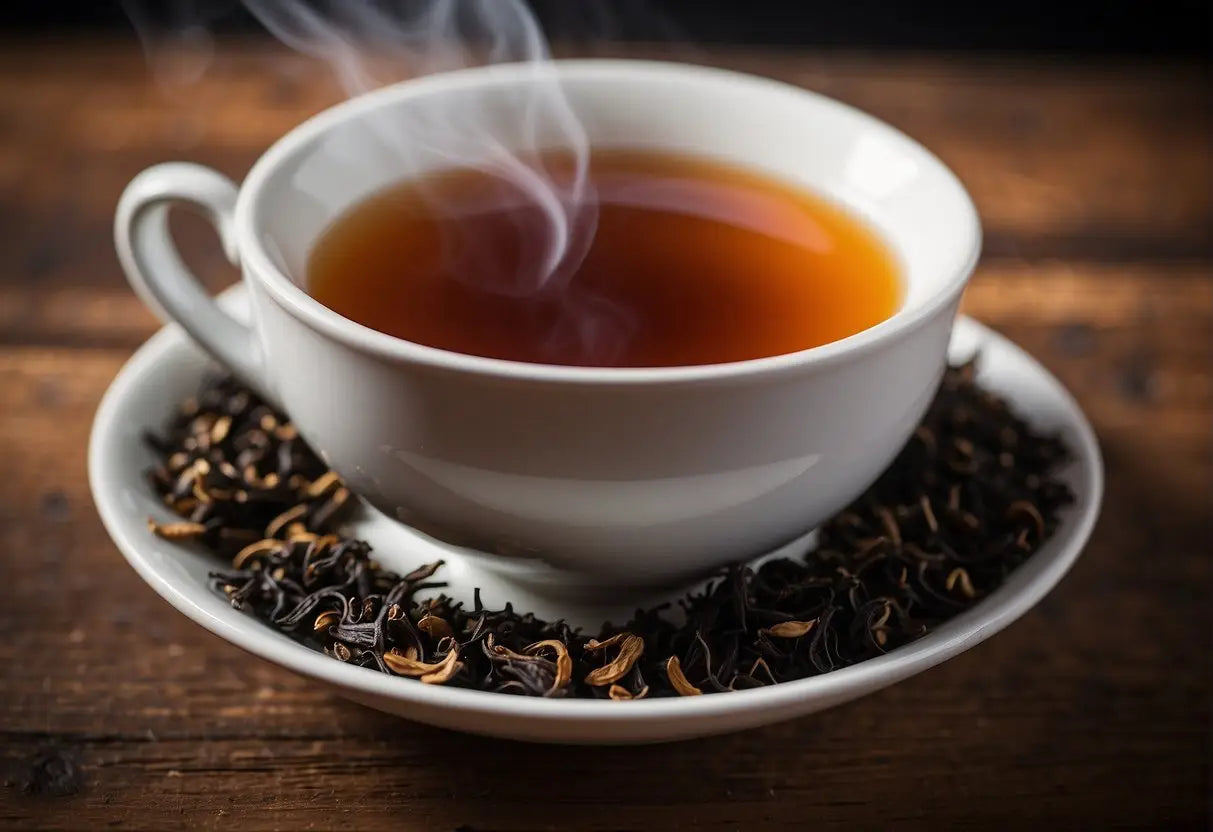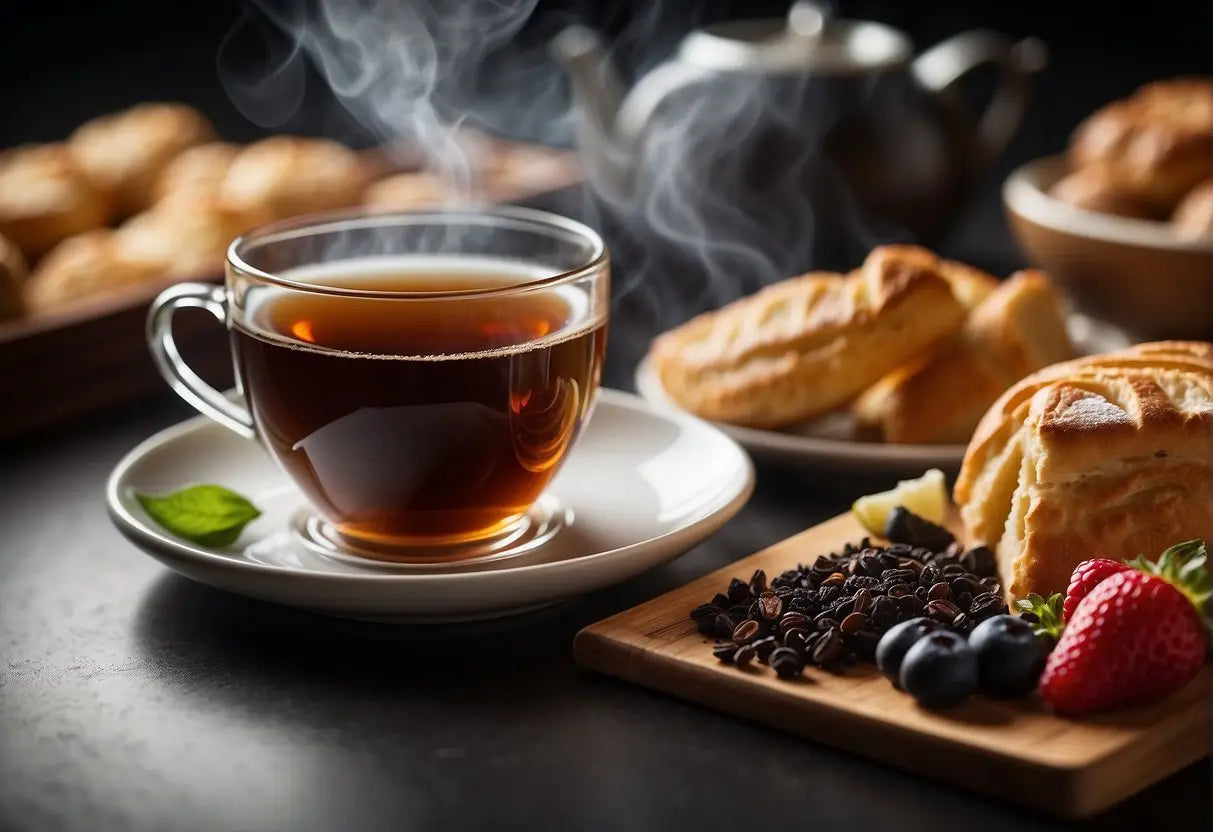What Does Black Tea Taste Like
Your experience with black tea can vary significantly depending on its origin, processing, and preparation. Typically, black tea has a bold and robust flavor profile that can range from malty and sweet to astringent and brisk. You'll often notice a full-bodied texture that feels rich on the palate.
Essential components of black tea's flavor:
- Maltiness: Associated with Assam teas, offering a hearty and comforting quality.
- Sweetness: Notes of honey or caramel may be present, providing a natural sweetness without sugar.
- Astringency: This gives a dry, puckering sensation, often linked to the tannins in the tea.
- Floral or Citrus Notes: Some blends may have a light, refreshing character with hints of citrus or flowers.
- Smokiness: Chinese Lapsang Souchong is known for its distinct smoky flavor, imparted by pine wood during processing.
Tasting Tips:
Bestsellers
- Observe the color and aroma before sipping; this can give you hints about the tea's profile.
- Start with a sip and let the tea wash over your tongue. This allows you to detect different flavor notes.
| Characteristic | Description |
|---|---|
| Body | Full, rich |
| Astringency | Puckering, can vary in intensity |
| Sweetness | Natural, subtle |
| Other Flavors | Malty, smoky, floral, or citrus |
Remember, your brewing method can influence the taste. Use fresh, pure water and steep for the recommended time to ensure a perfect cup that truly reflects the unique character of black tea.
Origins and Types

Black tea, known for its robust flavor profiles, originates from various regions, each offering distinct characteristics. You will discover how the location and processing methods contribute to the unique taste of each type.
Assam
Originating from the Assam region in India, Assam tea is recognized for its full-bodied, malty flavor, and deep amber color. It's typically harvested twice a year, during the first flush (spring) and the second flush (monsoon season).
Ceylon
Ceylon tea hails from Sri Lanka. It has a bold, citrusy profile and can vary in flavor depending on which part of the country it's from, ranging from crisp and light to rich and full-bodied. The high elevations of Sri Lanka impart a bright, brisk quality to the tea.
Darjeeling
The Darjeeling district in India produces teas often referred to as the "champagne of black teas." These leaves are known for their delicate muscatel flavor with a light to golden color and are best enjoyed without milk to appreciate the subtle nuances.
Earl Grey
Earl Grey isn’t tied to a region but is instead a blend of black teas flavored with bergamot oil, which gives it a distinctive citrus aroma and a slightly floral taste. The base tea is typically a bold black tea such as Assam or Ceylon.
English Breakfast
English Breakfast is a familiar blend and a morning favorite, made from a combination of black teas such as Assam, Ceylon, and Kenyan teas. It's appreciated for its full-bodied, rich flavor, and is robust enough to be paired with milk and sugar.
Processing Methods

The flavor of black tea is significantly influenced by its processing methods, which transform the fresh green leaves into richly flavored black tea.
Withering
Firstly, the fresh tea leaves are withered by laying them out and allowing them to wilt. This reduces moisture content and makes the leaves pliable, preparing them for rolling. Withering typically lasts for 18 to 24 hours.
Rolling
After withering, you'll find the leaves are rolled. This can be done manually or with machines, breaking down the cells and releasing essential oils, which contribute to the tea's flavor.
Lao Ban Zhang
Oxidizing
The Next Step
Oxidation or fermentation is a critical step where the rolled leaves are exposed to oxygen. The duration of this process varies, but it's generally between 1 to 3 hours. Oxidation influences the strength and richness of the black tea's taste.
Monitoring is Key
- Control: You must ensure the temperature and humidity are controlled to achieve the desired level of oxidation.
- Result: The leaves turn progressively darker as the chlorophyll breaks down and tannins are released.
Drying
Finally, the oxidized tea leaves are dried, which halts the oxidation process. The leaves are usually dried using forced hot air until their moisture content drops to below 3%. Drying is what locks in the flavor profile and determines the tea's final quality.
Flavor Determinants

The flavor of black tea is influenced by various factors specific to where and how it is grown, as well as when it is harvested.
Terrain
The terrain where black tea is cultivated plays a crucial role in its flavor profile. Higher altitudes often yield a crisper, more subtle taste due to the slower growth rate of tea plants, providing unique flavor characteristics.
- Altitude: Higher elevations can lead to nuanced flavors.
- Soil Conditions: Soil type impacts the mineral content in the tea, affecting taste.
Climate
Climate influences black tea's flavor, with variations in temperature and humidity contributing to the complexity and intensity of the taste.
- Temperature: Cooler climates can result in a milder flavor.
- Humidity: High humidity may enhance the tea's richness.
Harvest Time
The season and time of day when black tea leaves are picked can determine the final taste of the brew.
- Season: Spring harvests typically offer a lighter, more delicate flavor.
- Time of Day: Morning-picked leaves might have a fresher taste compared to those picked in the afternoon.
Brewing Techniques
Proper brewing techniques are crucial for extracting the full flavor profile of black tea. Let's look at water temperature, steeping time, and tea-to-water ratio to make your brew just right.
Water Temperature
For black tea, you should typically use water that is close to boiling. Ideal temperatures range from 200°F to 212°F (93°C to 100°C). Lower temperatures may result in an under-extracted brew, lacking in flavor and depth.
Steeping Time
The recommended steeping time for black tea is between 3 to 5 minutes. Over-steeping can cause bitterness and astringency, while under-steeping may lead to a weak cup lacking in robustness.
- 3 minutes: Lighter flavor
- 5 minutes: Fuller, more robust flavor
Tea-to-Water Ratio
A standard guideline is to use about 1 teaspoon (around 2.5 grams) of loose-leaf black tea per 8 ounces (about 240 milliliters) of water. Adjust to taste: more tea for a stronger brew or less for a milder flavor.
- Strong Brew: 1.5 teaspoons of tea
- Mild Brew: 0.75 teaspoons of tea
Taste Description

When you sip on black tea, you are experiencing a symphony of sensory aspects ranging from its visual allure to its complex flavor profile and aroma.
Visual Appearance
The visual appearance of black tea can vary, but generally you'll observe a deep amber to dark brown color in your cup. The clarity may differ based on the tea's origin and processing.
Aroma
Black tea's aroma can be quite potent and enticing. You might notice a bouquet of scents such as smoky, malty, or floral notes depending on the particular variety of black tea you're smelling.
Flavor Notes
- Sweetness: Some black teas have a naturally sweet undertone, often reminiscent of honey or caramel.
- Astringency: A notable briskness or dryness that can range from mild to pronounced.
- Bitterness: Usually minimal but can be present, providing a balanced depth.
- Complexity: Look for subtler notes like wood, spice, or fruit, which can vary widely among different black teas.
Mouthfeel
The mouthfeel of black tea is generally robust and full-bodied. You may experience a certain creaminess or a smooth texture that can leave a lingering finish on your palate.
Pairing Foods with Black Tea

When enjoying a cup of black tea, pairing it with the right food can enhance your tasting experience. Select foods that complement the robust flavors of the tea.
Sweet Baked Goods:
- Scones: Add a dollop of cream and jam to bring out the tea's richness.
- Biscuits: Simple, buttery biscuits are a classic choice.
- Cakes: Opt for fruit cakes or spiced loaf cakes for a harmonious balance.
Savory Items:
- Quiche: The buttery crust and savory filling work well with the tannic nature of black tea.
- Sandwiches: Choose simple fillings like cucumber or salmon to accompany the tea without overpowering it.
Spices and Herbs:
- Cinnamon: Adds warmth to the tea, perfect in baked goods.
- Mint: Fresh mint leaves in the tea or in accompaniments for a refreshing twist.
Fruits:
- Berries: Fresh berries can complement the acidity and depth of black tea.
- Citrus: Lemon or orange zest in cakes or pastries offers a bright contrast.
Cheese:
- Aged cheddar: Its sharpness pairs nicely with the boldness of the tea.
- Cream cheese: In a sandwich or on a bagel, it provides a rich, smooth texture.
By considering these pairings, you set the stage for a delightful tea experience. Each food choice brings out different notes in your black tea, making every sip a journey of flavors.
Frequently Asked Questions
Black tea offers a diverse palette of flavors, ranging from brisk and malty to sweet and fruity, and is a popular beverage with various taste profiles influenced by its origin and processing.
What are the primary flavor notes found in black tea?
The primary flavor notes in black tea typically include a bold, robust taste with hints of malt, smoke, wood, and subtle undertones of fruit or spice. The exact flavor profile can vary based on the specific type of black tea and its region of cultivation.
Can adding milk enhance the taste of black tea?
Yes, adding milk to black tea can enhance its taste by making it creamier and smoother, which can balance the astringency and strong flavor for those who prefer a milder beverage. The milk can also bring out hidden caramel or chocolate notes in the tea.
What are the health benefits associated with drinking black tea?
Drinking black tea may offer several health benefits, including antioxidant properties, improvement in heart health, reduced risk of stroke, and lower cholesterol levels. It also contains compounds that can aid in digestion.
How does the caffeine content in black tea compare to that of other teas?
Black tea generally has a higher caffeine content compared to other types of tea, such as green or white tea, but it contains less caffeine than coffee. The caffeine content in black tea can vary, but it typically falls between 40-70 milligrams per cup.
How can one distinguish the taste of black tea from that of green tea?
To distinguish the taste of black tea from green tea, note that black tea is fully oxidized, giving it a deeper, richer flavor profile, often with notes of chocolate or malt, while green tea is less oxidized, resulting in a lighter, grassier, and sometimes slightly bitter or astringent taste.
In what ways might black tea be similar to any other beverages in terms of flavor?
In terms of flavor, black tea may resemble some dark beers or roasted coffees due to its malty and sometimes chocolate or caramel taste notes. Additionally, its tannins can evoke a kinship with the dryness found in some red wines.
← Older post Newer post →











